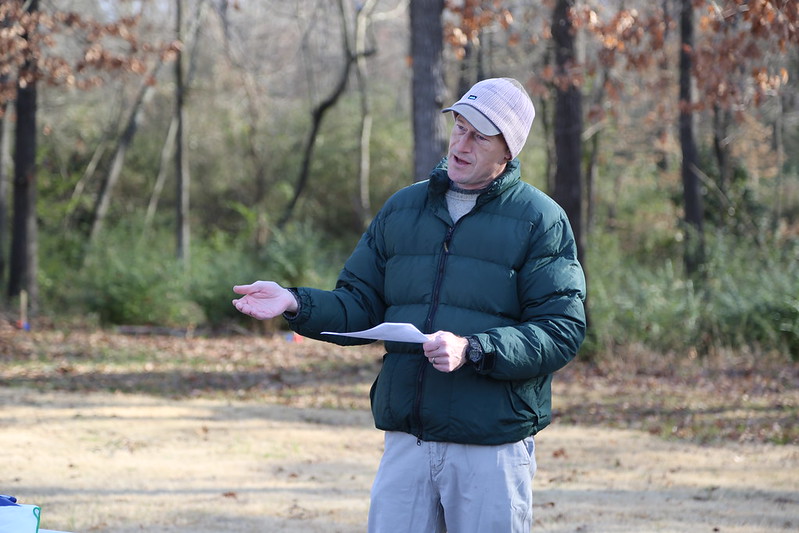Pasture management key to profit and water quality
Sept. 7, 2022
By the U of A System Division of Agriculture
Fast Facts:
- Buffalo River Watershed Enhancement Project working to reduce soil erosion, enhance water quality
- Buffalo River Watershed producers seeking to improve pastures
- $359K funding obligated for agricultural conservation in Buffalo River Watershed
(415 words)
LITTLE ROCK — Well-managed pastures can have a positive effect both on water quality and farm budgets. The Cooperative Extension Service, part of the University of Arkansas System Division of Agriculture, is working with partners and landowners throughout the state to make this potential a reality.
By re-establishing or invigorating existing pasture forages, farm production and profitability can increase while also protecting water quality.
John Pennington, extension water quality educator for the Division of Agriculture, said that nowhere is this more true than in the Buffalo National River Watershed, where a five-year Regional Conservation Partnership Project is focusing efforts on pasture landowners within the watershed.
The project provides as much as $400,000 in additional conservation practice funding annually for qualifying landowners, in addition to the usual funding allocation to Natural Resources Conservation Service county offices serving the Buffalo River Watershed.
“The current price of inputs such as fertilizers and fuel make retaining and utilizing existing on-farm nutrients even more important,” Pennington said.
“Controlling and rotating grazing is a critical step to maintaining healthy forage stands and soil health,” he said, adding that “sometimes pastures need fertility improvements, such as lime or simply reseeding, as a result of periods of drought or disease. Keeping the pasture covered with forage is critical to both production and water quality.”
Rotational grazing and other conservation practices can increase farm production and profit while reducing nitrogen, bacteria, phosphorus and sediment in runoff from agricultural lands within the watershed. The practices are also recommended in the voluntary Buffalo River Watershed Management plan.
Rotational grazing has many benefits, including:
- Allowing periods of recovery for the forage and soil
- Distribution of animal nutrients more evenly throughout the fields
- Increased grazing efficiency and
- Increased water and fertilizer retention in the soil
The Cooperative Extension Service works with multiple agencies and organizations, including the Nature Conservancy, the U.S. Department of Agriculture’s Natural Resources Conservation Service and others to form the Buffalo River Watershed Enhancement Project, which seeks to help watershed residents and landowners reduce erosion on their land and enhance water quality in the Buffalo National River. The partnership makes hundreds of thousands of dollars in grant funding available to landowners participating in the project each year. To learn more, visit https://www.uaex.uada.edu/environment-nature/water/buffalo-river-project.aspx.
For more information on pasture forage establishment, rotational grazing, or water quality check in with your local county extension office, conservation district, or Natural Resource Conservation Service office. To potentially receive funding for pasture management activities visit your local Natural Resource Conservation Service office.
To learn about extension programs in Arkansas, contact your local Cooperative Extension Service agent or visit www.uaex.uada.edu. Follow us on Twitter and Instagram at @AR_Extension. To learn more about Division of Agriculture research, visit the Arkansas Agricultural Experiment Station website: https://aaes.uada.edu/. Follow on Twitter at @ArkAgResearch. To learn more about the Division of Agriculture, visit https://uada.edu/. Follow us on Twitter at @AgInArk.
About the Division of Agriculture
The University of Arkansas System Division of Agriculture’s mission is to strengthen agriculture, communities, and families by connecting trusted research to the adoption of best practices. Through the Agricultural Experiment Station and the Cooperative Extension Service, the Division of Agriculture conducts research and extension work within the nation’s historic land grant education system.
The Division of Agriculture is one of 20 entities within the University of Arkansas System. It has offices in all 75 counties in Arkansas and faculty on five system campuses.
Pursuant to 7 CFR § 15.3, the University of Arkansas System Division of Agriculture offers all its Extension and Research programs and services (including employment) without regard to race, color, sex, national origin, religion, age, disability, marital or veteran status, genetic information, sexual preference, pregnancy or any other legally protected status, and is an equal opportunity institution.
# # #
Media Contact:
Ryan McGeeney
rmcgeeney@uada.edu
@Ryan_McG44
501-671-2120
